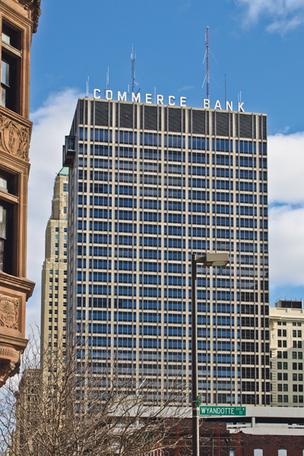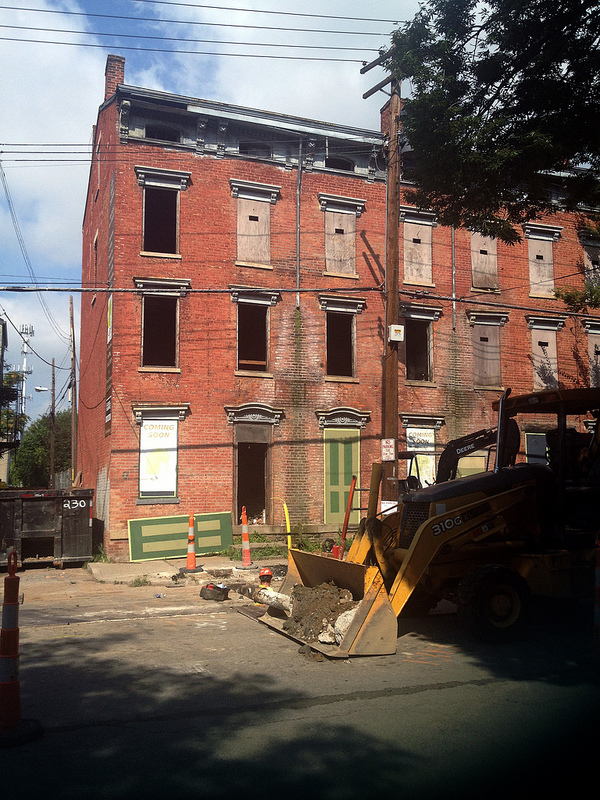When selecting a parking lot along the Kansas City streetcar line as the site for a 50-unit, five-story apartment building, Boulder-based developer Linden Street Partners was clear: “The streetcar is the big thing that drew us, absolutely,” the company's Scott Richardson told the Kansas City Star. “We like the demographics and the economic trends. I walked the area and liked the site.”

Kansas City hasn't even begun construction yet on the 2-mile, $103 million streetcar project. But the project is already spurring the kind of development that promoters hoped for. In addition to the apartment complex, the streetcar line also attracted a new, 257-room hotel. In what locals tell us is a rarity for downtown projects, the hotel received no subsidies.
There are other projects coming online near the route that are less concretely attributable to the streetcar project: A 22-story office tower will be converted to market-rate and affordable housing, and a 10-story building will be renovated for luxury apartments.
A similar effect can be seen in Tucson, where the city's under-construction streetcar will begin running next summer. Michael Keith, director of the Downtown Tucson Partnership, said $250 million in development has already been proposed along the four-mile route connecting the city's downtown to the University of Arizona.
"We’re going to see 100 million [dollars] teed up for next year, including a 139-room boutique hotel, and two multi-family apartment developments totaling 700 units," he said.
Keith attributes a wave of other building projects and new businesses in the last few years to the impending arrival of the streetcar. Downtown advocates are particularly excited about a high-end housing project called One East Broadway, which will contain 24 units, two floors of office space and two floors of parking. The project was financed in part with new market tax credits, Keith said, but it sets an important precedent.
"This was the first successful high-end housing project to hit downtown in more than a decade," he said. "It pretty much sets the table for a whole range of market-driven apartments to be built downtown. Other developers are going to be able to come in and get conventional financing for market-rate housing."

Tucson doesn't have a strong commercial downtown, making these residential projects all the more critical to the city core. "We're not Phoenix." Keith said. "We’re looking at a live-work-play and increasingly residential-based downtown."
Cincinnati is another city that is installing its first modern streetcar, a $150 million project that was envisioned as a way to revitalize and connect core urban neighborhoods and downtown. In this case, again, planned development that was one of the project's major objectives appears to be panning out. The city has barely begun laying tracks for its 3.6-mile starter loop, but developers are already lining up along the route.
The Elm Street Townhomes, still under renovation in Over-the-Rhine, are already sold out, according to the blog Cincy Whimsy. Elm Street Townhomes, LLC advertises its location along the under-construction streetcar line as part of the draw. Across the street, a senior living facility is being built.
Meanwhile, downtown, developers recently announced plans to convert a mostly vacant office building into 20 apartments.
Jim Moll of Coldwell Banker is the broker on the Elm Street project. He said the developers, two architects based in Seattle, purposely sought out vacant land by the streetcar route after voters approved a referendum on the project in 2008.
"Literally, the day after the ballot initiative passed I got calls from people about properties," Moll said.
As transit expert Jarrett Walker has written, the benefits of streetcars compared to buses are not related to mobility. These three projects don't give transit dedicated lanes to bypass traffic congestion. While it's certainly debatable whether streetcars were the optimal way to generate development with scarce transit dollars, it nevertheless seems clear that they are shaping these cities for the better, creating more walkable downtowns with a healthier mix of uses.
Moll said, in his opinion, a frequently running bus line wouldn't have sparked the same kind of interest in Cincinnati. "Rail is not a temporary thing where a bus route is," he said. "Those streetcars, they have to stay on the rail. That’s the defining point."





